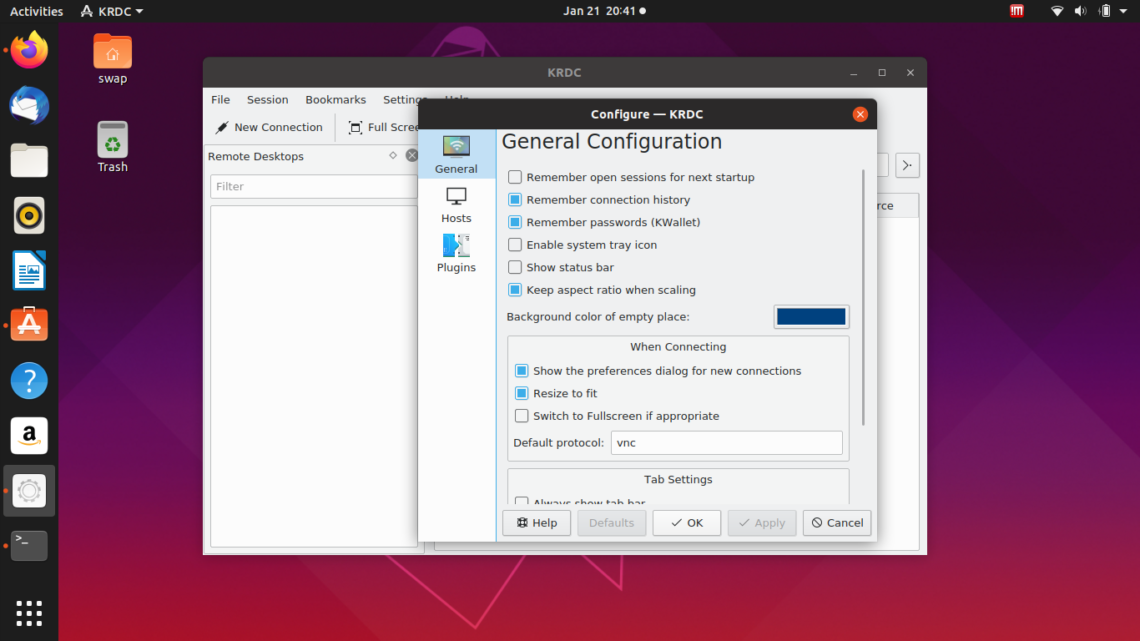
- #Best linux system monitor remote prettiest how to#
- #Best linux system monitor remote prettiest install#
- #Best linux system monitor remote prettiest update#
The lsb in that command stands for the project Linux Standards Base which is an umbrella project sponsored by the Linux Foundation to provide generic methods for doing basic kinds of things on various Linux distros. Just add to the list.Lsb_release -a is likely going to be your best option for finding this information out, and being able to do so in a consistent way. Note the array below has the single Prometheus sensor-metrics target. These scrape configs point Prometheus to the metric data targets it should ingest (i.e., "scrape").Īdd a scrape config for the sensor-metrics data to the array (if any) in the scrape config JSON setup in the previous article.
#Best linux system monitor remote prettiest how to#
The article shows how to set up Prometheus to read dynamic scrape configs from a file and reload automatically. If you haven't, go ahead and do that now (and tell all your friends what a great experience it was). Create a Prometheus scrape configīefore moving on, I recommend you read my earlier article about running Prometheus at home and have an instance already set up. Now for the last step: showing Prometheus where to look for all this data.
#Best linux system monitor remote prettiest update#
The data will update each time the service script checks the sensor data. It should look something like this:ĭata really IS beautiful! Look at that! Humidity and temperature in two different scales! You should see a page with several metrics about the Python client (bonus!), as well as the dht22_temperature and dht22_humidity metrics. In a browser, navigate to substituting the IP address of the machine running the sensor-metrics service. With the service running and the script modified to collect sensor data in gauges and display it for Prometheus, you can view the data as Prometheus will. Jun 30 03: 33:05 cumulo /opt /sensor-metrics /sensor-metrics.py : Temp: 30.6 *C, Humidity: 47.1 % Jun 30 03: 33:05 cumulo /opt /sensor-metrics /sensor-metrics.py : Serving sensor metrics on : 8000 Jun 30 03: 33:02 cumulo systemd : Started DHT22 Sensor Metrics Service. └─ 4129 /usr /bin /python3 /opt /sensor-metrics /sensor-metrics.py Loaded: loaded ( /home /chris /rvice enabled vendor preset: enabled )Īctive: active (running ) since Wed 2021-06- 30 03: 33:02 BST 8s agoĬGroup: /system.slice /rvice
#Best linux system monitor remote prettiest install#
You can install it with apt-get (or your package manager): The systemd service will be a separate file systemd uses, but it needs the python3-systemd package to send logs to the journal from the script. I'll also take advantage of the systemd journal and send log data from the script (e.g., startup or error messages) to the journal.

I'll add a systemd service to automatically start the script at boot and make sure it keeps running. But I'm running this on headless (i.e., no monitor, keyboard, etc.) Raspberry Pi Zero Ws installed in project boxes with DHT22 sensors, set up in different rooms of the house. The script is ready to go and would work with Prometheus as it is. Read_sensor ( ) Set up the systemd unit and logging The format of the data exposed for Prometheus to gather consists of a key (a metric name-that which is being measured) and a value separated by a space: dht22_temperature". So, the application will need to update the target metrics as new sensor data is received. Prometheus will check these text pages, or "targets," at a specified interval, looking for updates to the data.

In a nutshell, instrumenting the application for Prometheus requires taking the data from the sensor, labeling it, and serving it as text over HTTP so that Prometheus can find and store the data. This is where Prometheus shines as a time-series database with its own query language and graph capabilities.

That is good for checking the data manually for each moment, but it would be far more useful for me to gather and store the data to examine it historically.

In my previous article about using a Raspberry Pi Zero and DHT22 to collect temperature and humidity data, I showed how to write a Python script to gather the data and print it to the screen. It is used at huge scale by large enterprise organizations, but it is equally at home, well, at home, collecting data for hobbyist projects. In my job as a site reliability engineer running OpenShift Dedicated clusters for Red Hat, Prometheus is the core of a robust monitoring and alerting system for all of our clusters, operators, and applications. Prometheus is frequently used to gather data from container orchestration clusters such as Kubernetes and OpenShift. I've written about setting up Prometheus locally at home. Prometheus is an open source monitoring and alerting system that gathers metrics and provides a powerful query language for exploring data. Whitepaper: Data-intensive intelligent applications in a hybrid cloud blueprint.eBook: Running Kubernetes on your Raspberry Pi.Getting started with Raspberry Pi cheat sheet.


 0 kommentar(er)
0 kommentar(er)
